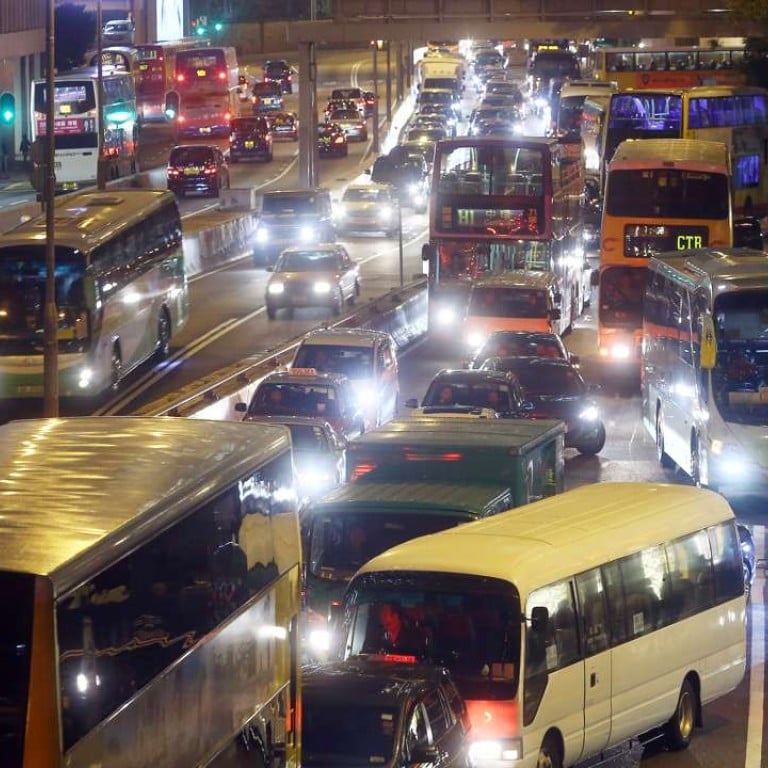
Charge big polluters more under Hong Kong’s electronic road pricing scheme
Loong Tsz-Wai says congestion fees need to vary depending on how green a vehicle is, to account for the social costs of congestion and help persuade more people to use public transport
Congestion is getting worse in Hong Kong. In response, the government is studying a plan for electronic road pricing, and public consultation is ongoing.
Electronic road pricing is an effective way to combat traffic jams, and has been found to be useful in reducing carbon emissions. Yet, the scheme must be carefully designed to fully account for the social costs of congestion.
READ MORE: Electronic road pricing plan for Hong Kong’s Central district slammed by local councillors
Neither, however, makes distinctions between the different vehicle makes, even though each produces different social and environmental costs.
The amount charged should be related to how polluting the vehicle is, to ensure all road users are charged fairly.
This is similar to a Pigovian tax, named after the economist Arthur Pigou, which is a tax on market activities that generate negative externalities.
The fee should be based on European emission standards: the more pollution produced, the higher the fee.
READ MORE: It will take more than electronic road pricing to ease traffic congestion in Hong Kong

READ MORE: Electronic road pricing can work in Hong Kong – alongside other measures
To provide alternative transport options, the government could expand its current low-emission zones for buses in Causeway Bay, Central and Mong Kok to cover other vehicle types, and set Euro IV standards as the baseline of its charging structure.
When we consider the true impact of polluting car emissions, such a measure does not go far enough
The Transport Department also urged consideration for varying the charges according to a vehicle’s carrying capacity. Thus, private cars would be charged more than, for example, public buses. This seems reasonable; private cars and taxis occupy 80 per cent of the road space in Central during peak hours, according to government figures.
However, when we consider the true impact of polluting car emissions, such a measure does not go far enough. Private cars carry fewer passengers, and have higher emission rates per capita than public transport.
Thus, we need complementary measures to support electronic road pricing. The government could increase bus service efficiency in charging zones by rationalisting routes.
More park-and-ride schemes could be set up near MTR stations. Similar to London’s experience, we could also introduce more buses in charging areas as an alternative for motorists.
In all such measures, the aim is to make it easier for drivers and passengers to make better use of public transport.
Loong Tsz-Wai is the community relations manager at Clean Air Network

